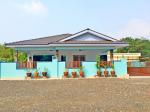Discover Perak. Real Estate, Lifestyle, Investment, Property Trend, News
Perak is the second largest state in Peninsular Malaysia, after Pahang. Its neighbours include Kedah and the Thai Yala Province to the north; Penang to the northwest; Kelantan and Pahang to the east; Selangor to the south, and the Straits of Malacca to the west. The state’s capital is Ipoh and royal capital is Kuala Kangsar.
In the early 1900s, Perak was famous for its tin-mining industry, notably in Lembah Kinta. However, the tin mines have since been exhausted and other industries such as tourism, manufacturing and agriculture have become major income contributors to the state. Some of the popular tourist sites in this state include Kellie’s Castle, Pangkor Island and several waterfalls and jungle trekking spots.
The property profile in Perak is diverse. Common commercial properties found mostly in towns include office blocks, shop-office units, shopping complexes and industrial lots. Residential properties in this state are terraced houses, semi-detached houses, bungalows, flat, apartments and condominiums.
Residents of Perak experience warm and sunny weather with occasional rain, which is typical of the tropical climate, throughout the year. Temperatures do not fluctuated greatly. It can go as low as mid-20 ˚C at night to mid-30˚C during the day. Heavy rainfall can be expected during the months of October to April.
More than half of Perak’s population is Malay. Other major ethnic groups are Chinese and Indian. Rebana Perak, a hand-held drum, is a famous traditional musical instrument of Perak. Cultural dances include tarian dabus, tarian bubu and belotah. Ipoh is known for its sar hor fun and Hainanese chicken rice. Tambun’s pomelos are also famous throughout the country. Lemang is a popular local Malay delicacy made from glutinous rice cooked in a bamboo tube. Another popular Malay dish is tempoyak, a durian extract which is preserved and kept in an urn.

Areas in Perak
Perak Specialists
Latest Perak New Projects
Popular Condos
Fast Fact
You Are Reading



















































